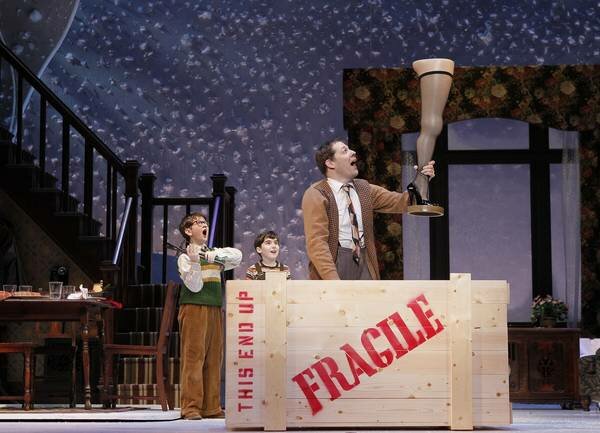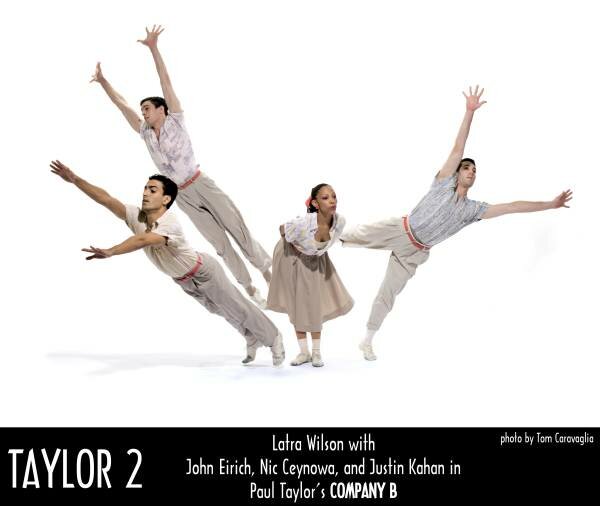Scott Garrepy

About Scott Garrepy:
Last Login: |
57 minutes ago |
Joined: |
October 11, 2010 |
Profile viewed: |
23 times |
Total Audience: |
1065 views |
Storiesby Scott Garrepy |
View by List | Grid |
I was probably one of the very few people in the theatre Thursday night who had never seen the iconic movie on which A Christmas Story: The Musical (at the 5th Avenue Theatre through December 30; tickets here) is based. The beloved 1983 holiday movie runs in a 24-hour marathon on TBS later this month, and many folks I know make watching it at least once a holiday tradition. With some fine tuning in future runs, this new musical has a good chance of becoming a holiday tradition in its own right.
You know the story. In 1940s Hammond, Indiana, young Ralphie Parker is laser-focused on one gift for Christmas: an Official Red Ryder Carbine-Action 200-Shot Range Model Air Rifle, "with a compass in the stock, and this thing which tells time." Based on the semi-autobiographical stories of New York radio host and storyteller Jean Shepherd (who also plays the narrator in the movie version), the show follows a series of comical vignettes that chronicle likely roadblocks for Ralphie achieving his goal of BB gun ownership.
With veteran Seattle actor Frank Corrado onstage as narrator Shepherd (with excellent timing), the production borrows a bit from A Prairie Home Companion by framing the production within a radio show. Like APHC, some sound effects--such as the barking of the neighbor's dogs and mothers stomping up stairs to spank their sons for allegedly throwing the f-bomb--are provided by an excellent quartet of singers who also keep the period Christmas music going throughout. The radio show conceit works and even gives some context to the sets that are more suggestive than realistic.
The real standout--even among the NYC-based actors in the show--is 11-year-old Clarke Hallum from Olympia. Hallum was cast after a nationwide search, and he is fantastic. His mezzo voice is as strong and nuanced as you'd hear from any singing child actor on Broadway. His performance is charming without being cloying, and he doesn't go for the cheap laugh. Corrado, who at one point staggers about the stage...milking it just a bit too long, could take a cue. He deserved every bit of the standing ovation that Seattle audiences are so quick to give.
You could tell that most of the audience knew the movie; laughter in anticipation would start as soon as key set pieces would drop in. Every key bit of the movie is here: the flagpole, the snow suit, "Ohhhh...Fuuuudge...," the "Fa, ra, ra, ra, ra" of the Chinese waiters, the pink bunny suit, and of course, the leg lamp. Oh, that fish-net covered "major award." NYC actor John Bolton plays Ralphie's dad, "The Old Man,"with glee (small "g"). His show-stopper number, "The Genius of Cleveland Street" is wonderful and features a Rockette-like kickline of leg lamps that somehow doesn't seem gratuitous. The other child actors are good, especially Dexter Johnson as Flick--who manages to sing the hilarious "Sticky Situation" with his tongue stuck to the flagpole.
Benj Pasek and Justin Paul's score serves the production well. Most of the music is fine but not too memorable. The exception is the Rawhide-inflected "Ralphie to the Rescue" dream sequence in which the Red Ryder-toting Ralphie fights off a crew of pirates, Snidely Whiplash, the Bride of Frankenstein, bears and tigers to save his town. "Somewhere Hovering Over Indiana," sung by the Ralphie, his brother Randy and the kids, is pretty and captures a child's view of Santa's magic journey on Christmas Eve.
After the 5th Avenue run, the production team--which includes Peter Billingsley, the original Ralphie from the movie--will work on getting the show to Broadway. With the 5th's track record of success in taking shows from Seattle to NYC, along with the built-in audience for this new musical, we should see that come to pass. A few years from now, my guess is you'll be seeing productions of A Christmas Story: The Musical at community theatres from Miami to, well, Hammond, Indiana.
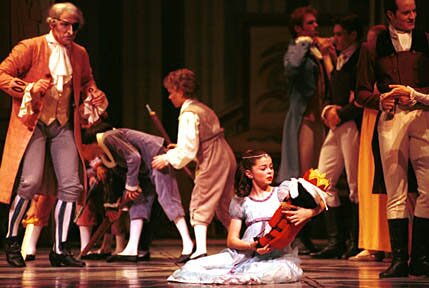 Pacific Northwest Ballet School student in "The Nutcracker" (Photo: © Angela Sterling)
Pacific Northwest Ballet School student in "The Nutcracker" (Photo: © Angela Sterling)
If you've been following The Nutcracker Chronicles, Alastair Macaulay's blog in the New York Times about his cross-country Nutracker-a-thon, you know that while the basics of the story remain largely the same from production to production, many ballet companies--large and small--employ artistic license to contextualize their Nutcracker for a local audience.
In the Nashville Ballet's production, young Clara goes to the 1897 Tennessee Centennial Exposition and her dreams take her to the land of sweets. In San Francisco, National Jewish Theatre Festival presented The MeshugaNutcracker! with the traditional Tchaikovsky music played in a klezmer style. The Tucson Regional Ballet's version is set in Tucson in the 1880's and features a battle between the coyotes and the U.S. Calvary.
With this in mind, I was wondering at last Friday night's performance what the Stowell/Sendak Nutcracker says about Seattle. I'd argue that it's: "Sure, we like our land of sweets, but it shouldn't be all fun and games, ya know." Maybe it's our Scandinavian heritage.
Sendak has never been one who is afraid of the dark, and his touch permeates not only the aesthetics of the production, but the subtext as well. Towards the end the first act party scene, young Clara's godfather, Herr Drosselmeier, whispers something to her that has her shaking her head and seriously creeped out. Across the stage, one of the older men at the party whispers something to a young girl that gets his face slapped. It's doubtful that the children in the audience noticed this or understood what was likely going on. It's a brief and subtle touch, among others, that gives this Nutcracker its bittersweet texture.
For the most part, the performances are terrific. Amelia Jay as young Clara danced with confidence and innocence. Sarah Ricard Orza was beguiling as the Ballerina Dolls brought to life at the first act's party, but her counterpart Sword-Dancer Doll, danced by James Moore, lacked the crispness of movement that can make that brief role thrilling.
When young Clara falls asleep (within her own dream of the entire show--this production is so meta) after the climatic mouse battle, she awakens as the now-grown Clara, danced by principal Carla Körbes. She gives herself a surprised once-over and then has the same "Let's see what this baby can do" look that I would get if handed the keys to an Audi R8 before launching into a pas de deux with the Nutcracker Prince. Her Clara is the essence of lyrical grace. The almost-always-excellent PNB corps danced beautifully in the snowflakes at the end of Act I, with soft undertones of green, yellow and red in the flowing, soft tulle of their white ballet dresses.
While first act is about story, second act is about dancing. Act II dances in the land of sweets are good, if not more than a little politically incorrect (the whirling dervishes, for example, look like they're in blackface), which is a bit counter to my "Seattle's Nutcracker" theory. The land is ruled by the Pasha, with oversized turban and an eyepatch suspiciously like the one worn by Herr Drosselmeier (hmmmm...). Highlights include Ariana Lallone's sensual Peacock. With a sense of regal elegance, she holds the entire audience captive from the moment she emerges from her cage. Carrie Imler, leading the Waltz of the Flowers, is another standout, with seemingly effortless and perfect fouetée turns. As the Nutcracker Prince, Batkhurel Bold does exactly what he is supposed to (and well): make Körbes' Clara look weightless.
In the end, adults and children will take away different things from this Nutcracker. The magic is there for everyone, though. There was a four-year-old sitting behind me, loudly asking her mom questions through whole of Act I--and making it hard for me to suppress my inner Niles Crane. As annoyed as I was with her--well, her mom, actually--she probably summed the whole thing up best when she turned to her mom and said, "I want to go there."
Last Wednesday, Paul Taylor's Taylor 2 Dance Company visited Bellevue's Theatre at Meydenbauer Center with a three-piece evening. Established in 1993 by now-80-year-old choreographer and dance giant Paul Taylor, Taylor 2 is a touring group that travels all over the world.
His dances are often reworked for this six-person troupe, allowing for Taylor 2 to play in smaller houses with smaller budgets. The six-member company of young dancers is to Paul Taylor's main company as the Seattle Opera Young Artists Program is the Opera's mainstage performances. With this performance, you don't get technical precision, but you do get a youthful spirit of dancers emerging as artists.
The evening started (oddly, ten minutes early) with 3 Epitaphs. First performed in 1956, the piece begins as slouching figures lope onto the stage, covered head-to-toe in dark grey jumpsuits designed by the American abstract expressionist artist Robert Rauschenberg. With small mirrors over their eyes and on the palms of their hands, their knuckle-dragging treatise on posture--and playful sense of humor--brought to mind designer sock monkeys. (All right, they also reminded me of the back-up dancers for the Black Eyed Peas, circa "Boom Boom Pow.")
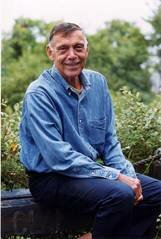 Paul Taylor (Photo: Maxine Hicks)
Paul Taylor (Photo: Maxine Hicks)
Taylor's focus on everyday movements, and their integration into his choreography, was revolutionary at the time--and so commonplace in dance today that it's hard for us now to see this piece as those who saw its premiere did. The lazy jazz music--an early form played, interestingly, at both weddings and funerals in NoLa--matches the intentionally lazy body movements of the dancers.
Taylor's brilliance was more in evidence in Duet from Roses. This balletic pas de deux featured dancers Justin Kahan and Madelyn Ho. Much of this piece is a pretty, standard duet from any story ballet. Even the music, Adagio for Clarinet and Strings by Heinrich Baermann, is reminiscent of Tchaikovsky's Nutcracker, making me wonder where the Taylor was in all of this.
But if you look closely, you see the small touches that are, for me, what makes his work a departure from Ballanchine. At one point, Kahan crouches down and places his hands, one above the other, gently on Ho's right hip. It's a tiny detail, lasting for only a few seconds and serving no purpose other than to convey an intimacy in a way deeper than your standard ballet vocabulary allows. Both danced with a graceful fluidity. Ho, whose bio mentions her recent graduation with a degree in Chemical and Physical Biology from Harvard, is charismatic. While some of the other dancers are clearly more accomplished, she has a magnetic quality that outshines them.
The last piece, Company B, subtly juxtaposes the innocence that was represented in the pop culture in the '40s with the realities faced by soldiers at the time. It begins quietly, with the full company emerging from a grayish fog-like light, as if they are stepping in from the past. The Andrews Sisters kick in with "Bei Mir Bist du Schön" and all are in high spirits. During the "Pennsylvania Polka," a couple whirls about the stage, while upstage, two soldiers act out war games in slow mo. In "The Boogie Woogie Bugle Boy (of Company B)," Kahan is all brash exuberance until he's shot in the last moment of the piece. If you blink you miss it--and you see the piece completely differently.
Having seen Taylor's work performed by ballet companies across the country--especially Company B--I can say that Taylor 2's performance lacks the cohesiveness that, say, a PNB would bring to Taylor's choreography. But Taylor interpreted by a ballet company is a different animal. Beautiful, but different. Taylor 2 brings a non-classical, everyday movement feel to the work that works. It's different, imperfect, and beautiful.
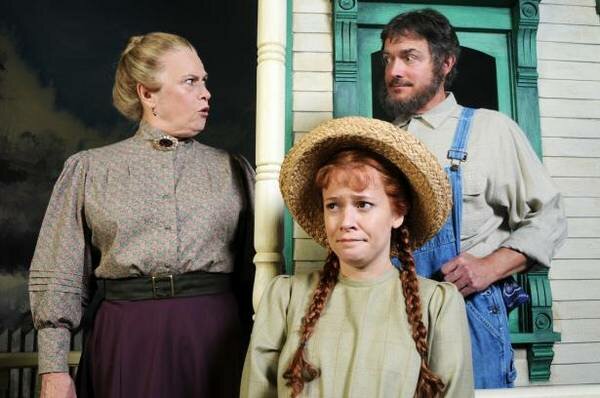 Suzy Hunt as Marilla, Kasey Nusbickel as Anne and Dennis Bateman as Matthew in Village Theatre's Anne of Green Gables (Photo: John Pai)
Suzy Hunt as Marilla, Kasey Nusbickel as Anne and Dennis Bateman as Matthew in Village Theatre's Anne of Green Gables (Photo: John Pai)
For the holidays and beyond, Village Theatre offers a sweet, well-cast, new musical production of Anne of Green Gables (thru Jan. 2 at the Francis J. Gaudette Theatre in Issaquah and the Everett Performing Arts Center Jan. 7-30; tickets $20-$60). While it won't change your life, it's further illustration that Village does what it does exceedingly well: Create and deliver solid musical theatre pieces that will live beyond their Village Theatre run. This is not a theatre that would give us The Addams Family.
Based on--and following closely--Lucy Maud Montgomery's beloved book, Anne... is the story of Anne Shirley, a red-haired, 12-year-old orphan girl who arrives in the farming village of Avonlea on Canada's Prince Edward Island to live with bachelor farmer Matthew Cuthbert and his bachelorette sister Marilla.
Played by Dennis Bateman (doing a pretty good Hal Holbrooke) and veteran Seattle actor Suzy Hunt, the Cuthberts are surprised to find that the orphanage has delivered a girl instead of the boy they were looking for to help around the farm. Matthew is taken with Anne and wants to keep her. Practical Marilla isn't sure and keeps Anne on probation for a while. Even if you haven't read the book, you can likely guess how it all turns out.
As the title character, 30-year-old Kasey Nusbickel sings beautifully and does an credible job of growing the character from 12 to 17. She gets Anne's impetuousness and earnestness just right. Even in the scenes where Anne goes for the overly dramatic ("The Solemn Apology"), Nusbickel resists the temptation to take it too over the top. It's in her touching account of her life before Avonlea ("No One to Want Me") that we get the full sense of her vocal and emotional range.
It is Suzy Hunt's Marilla, however, that is the most memorable performance. She has the same sort of gravitas that Megan Cole brings to the Rep's Three Tall Women--and the ability to make you feel her presence in the world of the play even when she's not on stage. That, my friends, takes acting chops. Her not-so-warm-and-fuzzy relationship with Anne is the central one of this musical, and Hunt allows us to see Marilla slowly letting Anne in without being obvious about it. More an actor then a singer, Hunt sings the role with enough conviction to make you forgive her that.
The ensemble cast is solid and sings well, especially the last song of the show, "The Bend in the Road." What doesn't quite work musically is when Janet Yates Vogt and Mark Friedman, who together wrote the book, music and lyrics for Anne, have the characters sing over each other ("What a Fix"). What is intended as a vehicle to show the interior thoughts of multiple characters just comes out mushy. Their attempts at patter song ("Positively Providential") are best left to G&S.
Not too surprisingly, the red-haired 14-year-old girl with me loved this completely family-friendly show and identified easily with Nusbickel's headstrong Anne. Those of us who are, ahem, a bit older can better identify with the Cuthberts, who are faced with what they think is a mistake and, over time, realize it's what they wanted all along.
